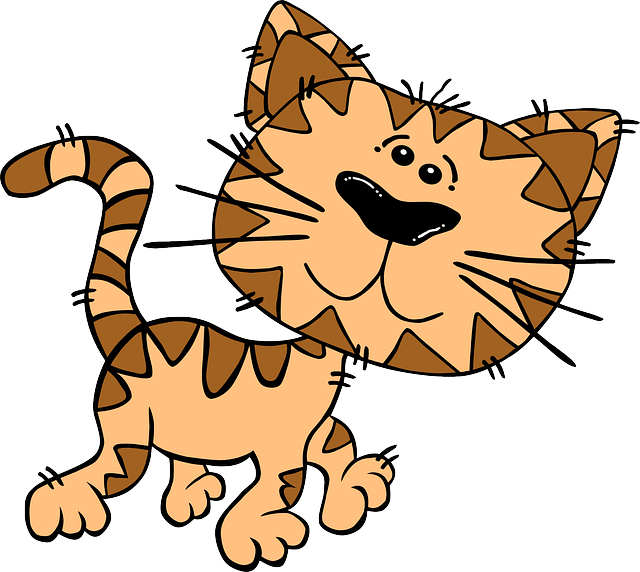Falling Cat
You have a symbolic falling cat. This cat is made up of two cylinders, a heavy one (the body) and a smaller one (the tail) as in the figure.
You know the mass and dimensions of the falling cat and its tail. The tail rotates around the cat body to allow the cat to fall each time on its feet. The tail is powered by a motor. If the cat falls from a height of $h=2.5 m$ with its feet upside down, please find the power of the motor necessary for the cat to land on its feet.
What improvements of the design of this falling cat are necessary to reduce the electric power consumption of the motor? What would you choose for the dimensions of the cat and its tail for to make the cat easier to land on its feet?
The cat has a mass of $m1=5.44 kg$, and its dimensions are $L1 =1 ft = 0.305 m$, $d =6 inch =0.1524 m (r1 =0.0762 m)$
The tail has a mass of $m2=0.0544 kg$ and its dimension is $L2 =1 ft =0.305 m$
The tail is rotating opposite to cat around the $x$ axis.
The moment of inertia of the cat
$I1= 1/2*m1*r1^2=0.01579 kg*m^3$
The moment of inertia of the tail
$I2= 1/3*m_2*L_2^2=0.001687 kg*m^3$
The time of fall is
$s=(gt^2)/2$ that is $t= \sqrt{(2*2.5/9.81)}=0.7139 s$
The cat is rotating half of its circumference in the fall time. Assuming uniform rotation speed
$ω_1=π/t=4.400 (rad/s)$
Angular momentum of cat = Angular momentum of tail
$I_1*ω_1=I_2*ω_2$ that is $ω_2=I_1/I_2 *ω_1=41.187 (rad/s)$ (angular spped of tail)
Energy for rotating tail is
$E_2=(I_2 ω_2^2)/2=1.431 J$
Power from motor is
$P=E/t=2.00 J$
Design improvements:
$E=I2*(ω_2^2)/2=I2*(I1/I2)^2 ω_1^2=(I1^2 ω_1^2)/I2$
To lower the power one needs “slim” cat ($I1$ min), “heavy long” tail ($I2$ max) and maximum fall time ($w1$ min).


